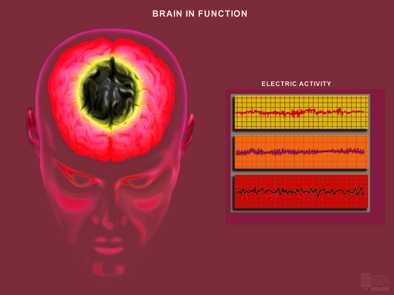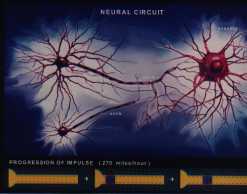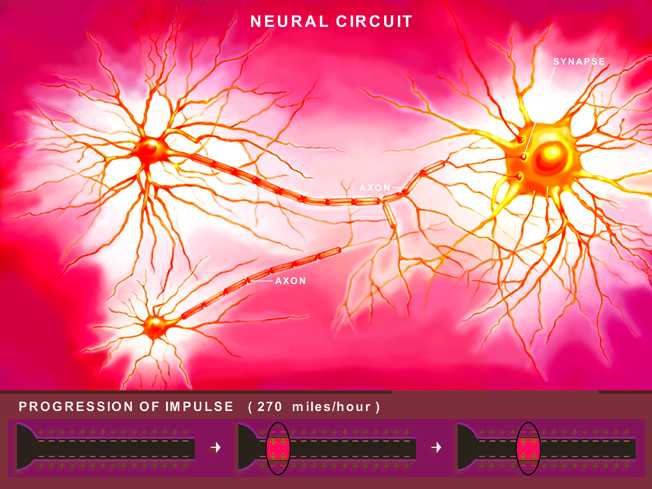

More than two centuries ago, Luigi Galvani envisaged animal electricity and proposed that brain, nerves and muscles, worked through electric forces. Brain electric activity can be monitored by electroencephalography, which reveals the generation of different electric waves from the cerebral cortex depending on the state of arousal, sleep, dreaming and other activities (Fig. 1). Where are these electric signals generated, how are they able to travel along nerves and, finally, does our brain work like the electric circuits of our hair-dryer?
A microscopic-scale view of the brain, reveals that it is composed of a network of extraordinary cells, the neurons, connected by specific contacts (synapses) to form a highly complicated wiring structure (Fig. 2). In the human brain there are about 100 billions of neurons and the number of connections is at least a thousand-fold higher. The signal travels rapidly from one neuron to the following one along the axon as an electric wave related to a temporary inversion of the electric field between the inside and outside of the cell. This is due to the rapid flow of small electrically-charged molecules (ions), through channel proteins present in the cell membrane.
1) Brain in function.
2) Neural circuit.
